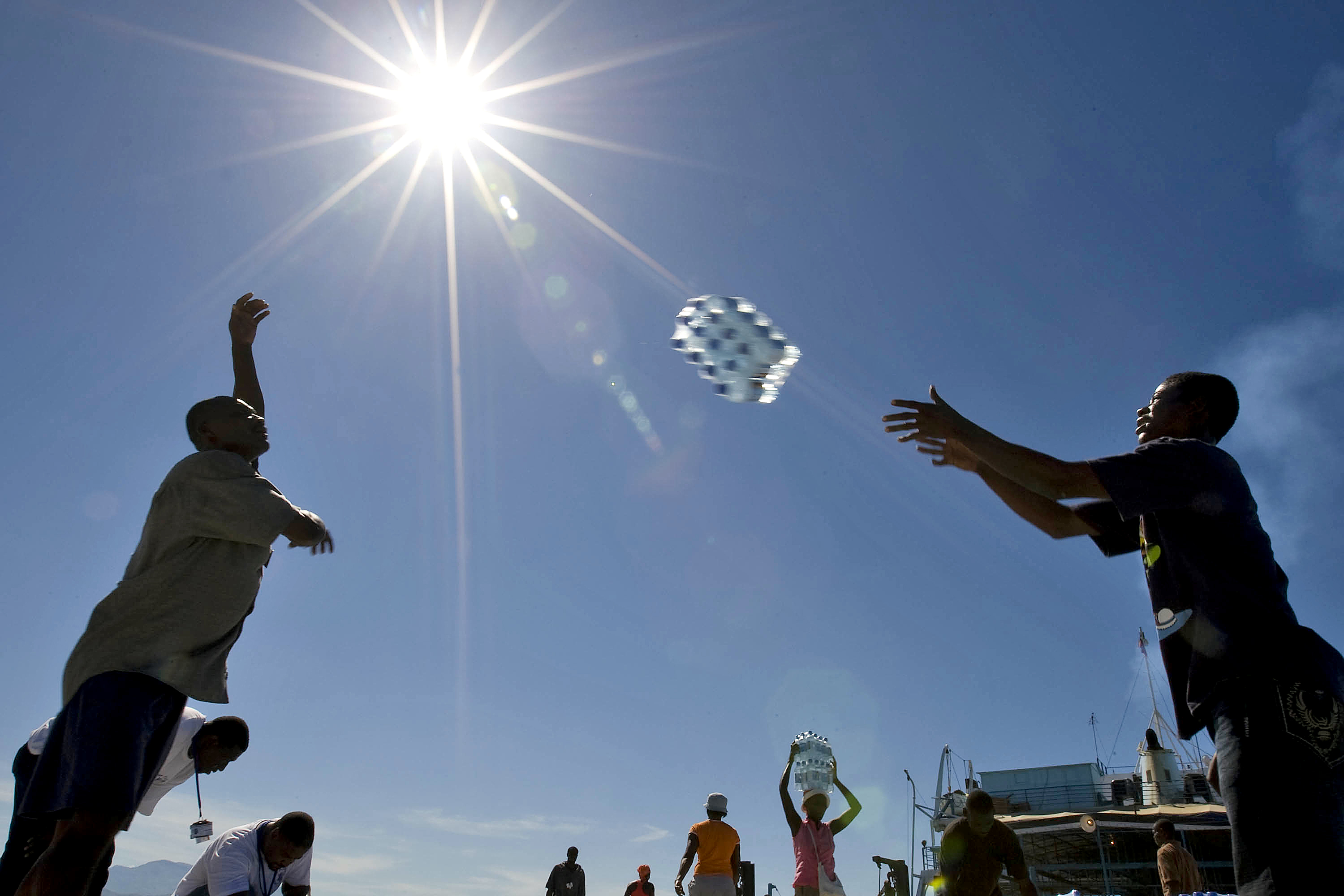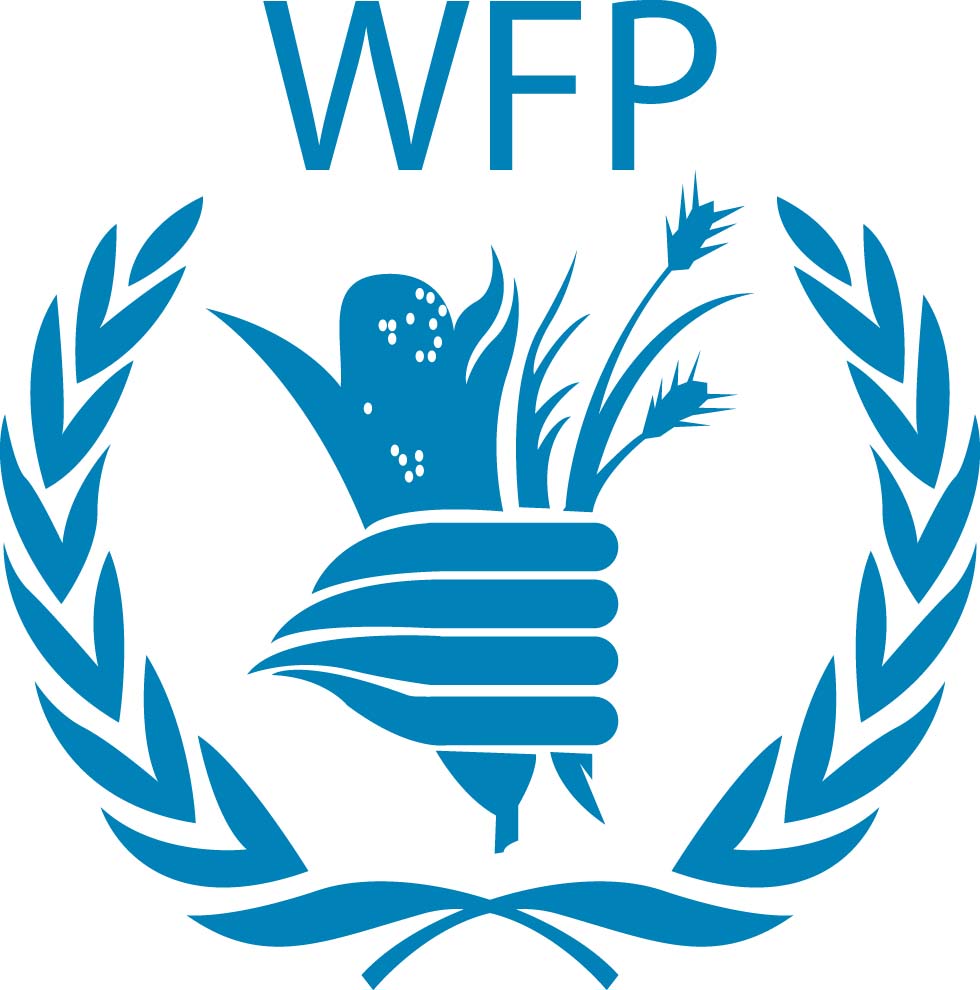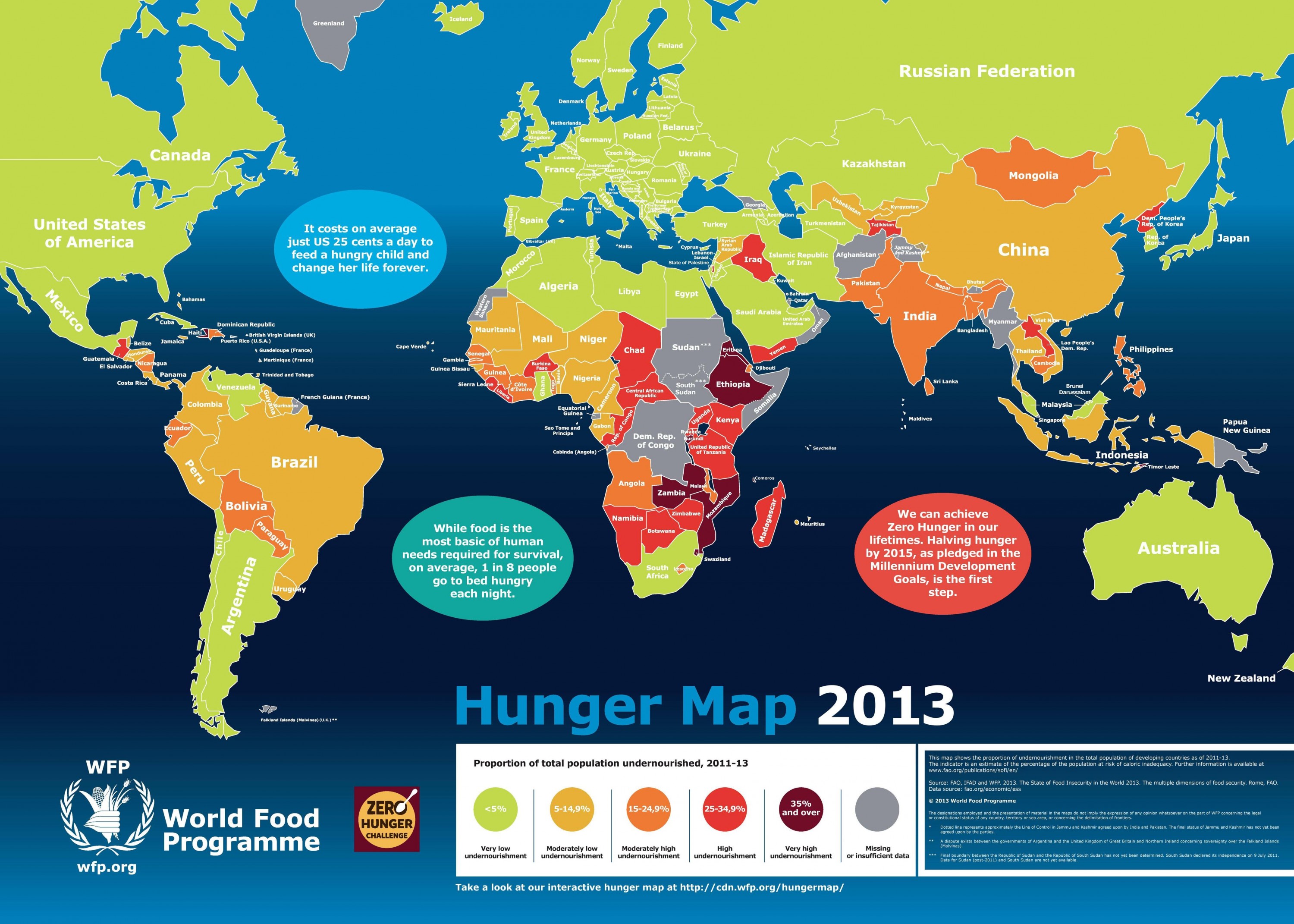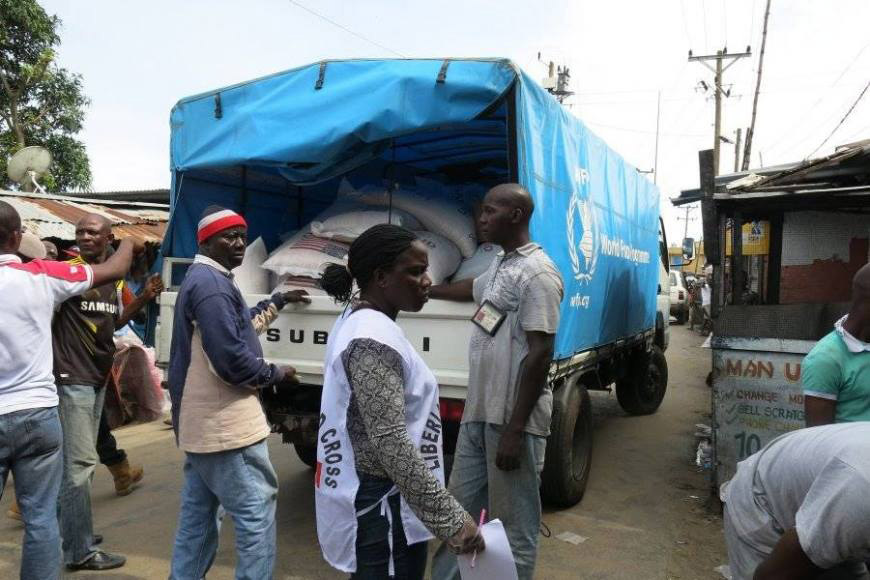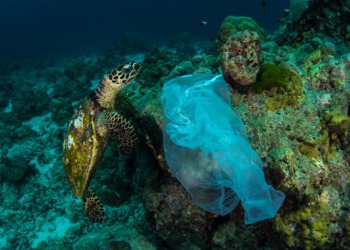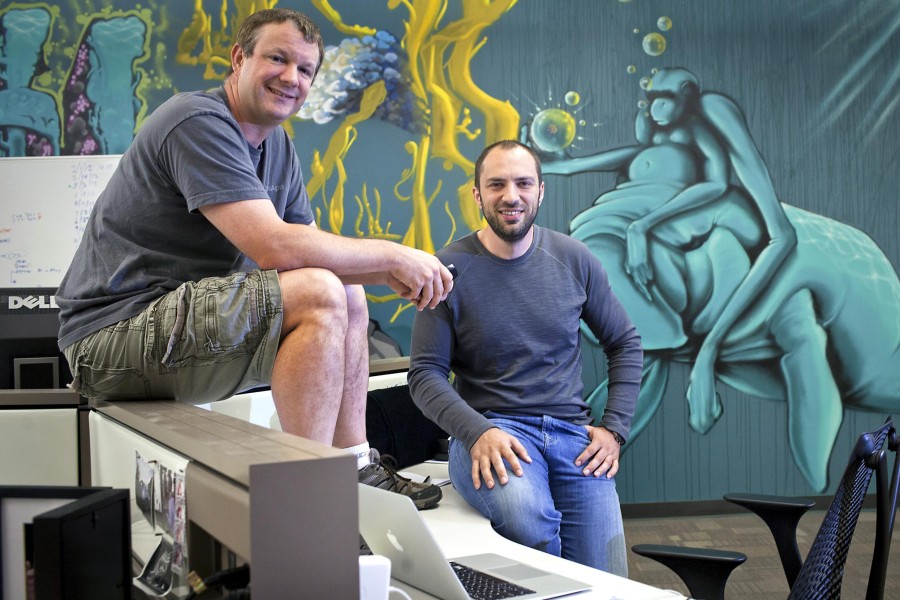The World Food Programme: From a Small FAO Unit to Top UN Humanitarian Agency
When children outgrow their parents…That is what happened to the World Food Programme that started as a small unit within FAO back in 1961 and is now one of the world’s largest humanitarian aid agency addressing hunger and ‘food security’. It was the brainchild of US Senator George Mc Govern who promoted the idea of using US grain surplus to feed “the underprivileged at home and abroad”as he put it. By 1962, his Food for Peace program, that many considered one of the greatest successes of the Kennedy administration, had fed 10 million Americans and 35 million children around the world while the World Food Programme (WFP) had already expanded to a dozen countries, ahead of its “official” start in 1963.
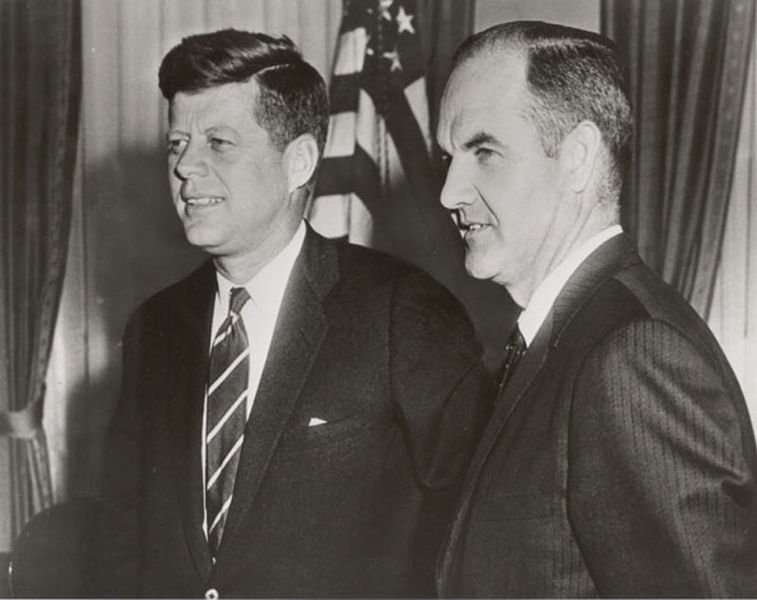 In the photo: McGovern with John F. Kennedy who put him in charge of Food for Peace program, which McGovern had conceived.
In the photo: McGovern with John F. Kennedy who put him in charge of Food for Peace program, which McGovern had conceived.
Read more: http://www.digitaljournal.com/article/334900#ixzz3DYyaJPFP
Now, WFP reaches out in over 80 countries to an average 90 million people, of whom two-thirds are children, with a biennial budget hovering around $10 billion – compared to FAO’s average one billion. From its headquarters in Rome, it deploys a staff across the world that is easily four times that of FAO – some 12,000 people whose daily task is to control the logistics of food delivery in areas affected by natural disasters and man-made emergencies, usually wars – the lastest one being Syria and Iraq under the threat of ISIS and Gaza.
Its blue and white logo still retains an FAO flavor but it has gone beyond FAO: in addition to wheat, it shows corn and rice to emphasize that its feeding mission has a global reach, covering all continents and all (food) cultures.
WFP is big but it’s not alone. It’s in a complex team structure that draws in all major UN agencies (32 plus 5 observers including the World Bank and OCHA, the Office for Coordination of Humanitarian Affairs).
…………………………………………………………………………………………………………………. More: THE JOURNEY DOWN “THE LONG AND WINDING ROAD” article by Bob RectorEBOLA CHALLENGES THE WORLD HEALTH ORGANISATION article by Claude Forthomme ………………………………………………………………………………………………………………….
WFP is placed near the apex, one of four members of the Executive Committee of the UNDG, the United Nations Development Group created in 1997. The other participating agencies are UNDP (the UN Development Programme), UNICEF (the UN Children’s Fund) and UNFPA (UN Population Fund). Note FAO is not part of it; FAO is a permanent member of the Advisory Group to the UNDG, one among ten agencies.
WFP however doesn’t head the Executive Committee, UNDP does – with a woman at the helm since 2009, the first woman to become the UNDP Administrator, Helen Clark. Prime Minister of New Zealand from 1999 to 2008, she is now in her second term at UNDP and as UNDG Chair. Some people see her as a potential successor to the Secretary General Ban Ki-moon when he retires in 2016 (she hasn’t confirmed).
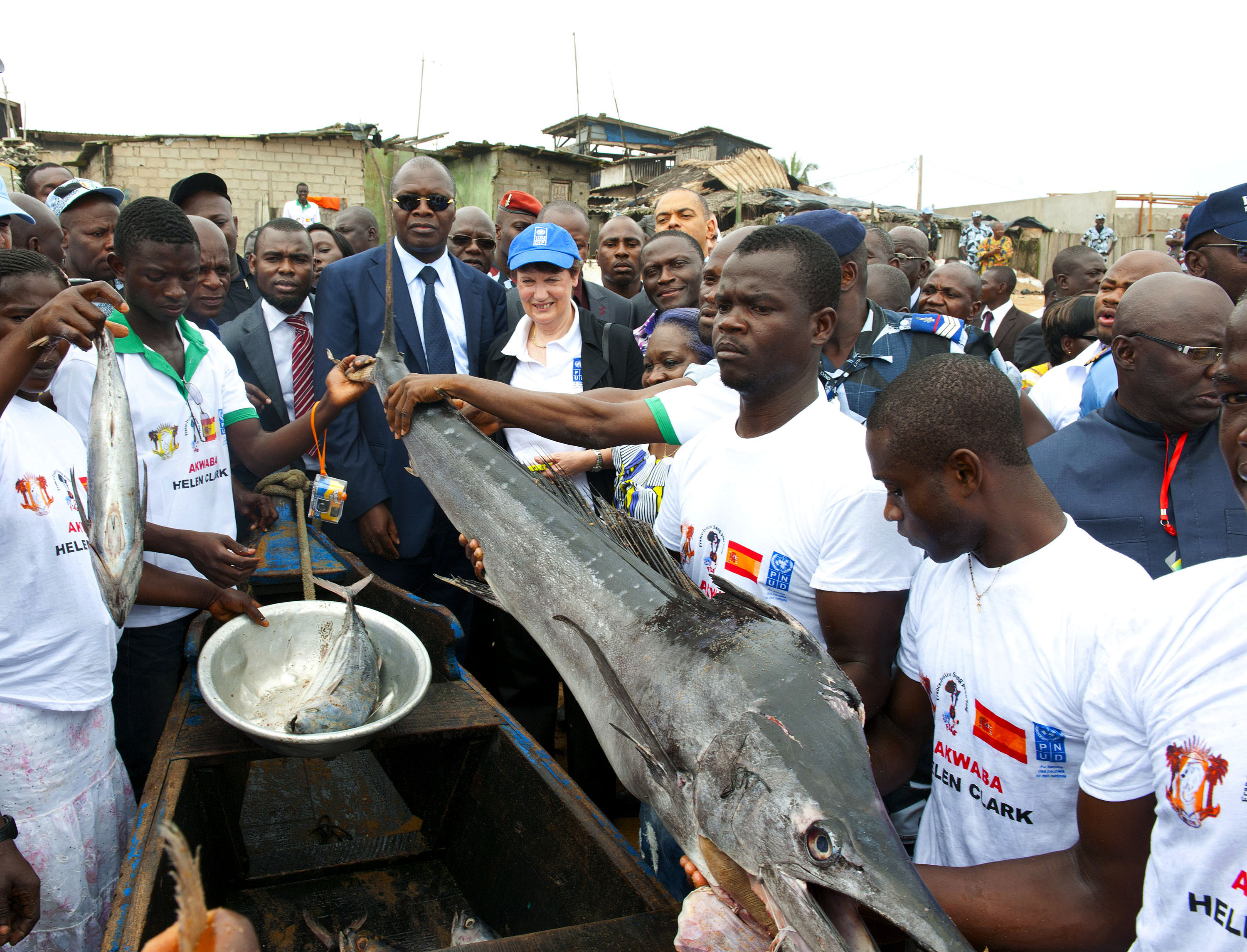 In the photo: Helen Clark (centre, in blue hat), Administrator of the UN Development Programme (UNOD), visits a youth employment project in Port-Bouët, just south of Abidjan, in Côte d’Ivoire. To the immediate right of Ms. Clark is Ndolamb Ngokwey (left), Deputy Special Representative of the Secretary-General for the UN Operation in Côte d’Ivoire (UNOCI).
In the photo: Helen Clark (centre, in blue hat), Administrator of the UN Development Programme (UNOD), visits a youth employment project in Port-Bouët, just south of Abidjan, in Côte d’Ivoire. To the immediate right of Ms. Clark is Ndolamb Ngokwey (left), Deputy Special Representative of the Secretary-General for the UN Operation in Côte d’Ivoire (UNOCI).
Likewise, at field level, leadership is in the hands of UNDP senior staff, the Resident Coordinators in over 130 countries where the UN is present with country offices. The head of the local UNDP office is thus the “primus inter pares” among UN agencies – all this to ensure coordination of development aid but also in the case of emergencies.
Even the UNDG does not act alone. It is under the supervision of both the UN General Assembly and the UN Economic and Social Council, via the so-called “Quadriennal comprehensive policy review” (QCPR) process.
Now either you enjoy the UN’s alphabet soup or you don’t, but there is no denying that the system has been remarkably creative. The hard-to-pronounce QCPR is in fact a complex 4-year process of monitoring and reviewing results and policy change proposals. No doubt it creates a massive report, but it is also transparent. It touches on all the major UN development and emergency aid concerns, including the fight against poverty, women’s empowerment and development of national capacities and, every four years, it culminates in a negotiation within the UN General Assembly (in the Second Commission) that results in a UN Resolution where every country has a chance to vote and make its position known.
Does that mean the UN General Assembly micro-manages the specialized agencies?
No, the QCPR process is highly political, it gives general directions, it sanctions major policies but it doesn’t get down to the nitty-gritty details. But don’t conclude that the World Food Programme and all its sister agencies are home free, there is in fact a form of close surveillance through”governing bodies” specific to each agency. They normally meet at least every six months or more often, and in the case of the WFP, it’s the Executive Board consisting of 36 member states; it meets three times a year to oversee operations. The WFP Executive Director, who serves 5 years and is normally an American (at least since 1992), reports to it. The current head is Ms. Etharin Cousin, a democrat specialized in food industries and related charities and who was the US Ambassador to the Rome-based UN Agencies:
 In the photo: Secretary-General Ban Ki-moon (right) meets with Ertharin Cousin, new Executive Director of the World Food Programme (WFP)
In the photo: Secretary-General Ban Ki-moon (right) meets with Ertharin Cousin, new Executive Director of the World Food Programme (WFP)
The World Food Programme delivers from 3 to 4 million tons of food each year, working with some 3,000 Non Governmental Organizations on the ground. Food assistance is focused on the most vulnerable to hunger: women, children, the sick and the elderly. Well aware of the criticism that giving food destroys the local agriculture, WFP has diversified its assistance: it has scaled up vouchers and cash distribution, and devised a series of aid tools that are intended to support the local economy rather than threaten it – including support to small farmers (Purchase for Progress – P4P), school meals and Food-for-Assets that help in the construction of irrigation and small infrastructure.
In 2012, WFP reached 1.5 million people in 33 countries through its HIV and TB programmes – people affected by HIV and/or tuberculosis need more nutrients and calories in their diet. Right now, WFP is involved in the fight against Ebola, it has brought relief to Liberia. Here is a WFP truck in Monrovia’s quarantined West Point area:
WFP is also a logistics champion within the UN system and has even developed a special team called FITTEST (Fast Information of Technology Emergency and Support Team) with telecommunications specialists that support the rapid deployment of aid. It is also remarkably good at keeping its administrative costs very low (at 7%, one of the lowest rates in any aid organizations).
Over 90% of the WFP budget comes from donations, mostly from governments but also private sources, up to $500 million – for example, actor Drew Barrymore donated $1 million in 2008. WFP has of necessity become adept at building up public support for the fight against hunger through a variety of media campaigns, notably World Hunger Relief Week, Walk the World, Fill the Cup campaign. A number of celebrities have publicly endorsed WFP, among them Christina Aguilera, Drew Barrymore and Sean Penn.
In spite of all its achievements, the World Food Programme cannot fly at it alone, world hunger is too big a beast. WFP has always worked in close cooperation with its sister agencies. Remarkably, this is something it has managed to do even in the dark days of the 1980s-1990s, when the rivalry between the heads of the WFP and FAO was intense, as the WFP Executive Director (an Australian) sought to increase WFP independence from FAO (he succeeded – in 1992, total “severance” from FAO was achieved). That rivalry at headquarters in Rome was never reflected in field operations where collaborative activities proceeded smoothly. At the time, I saw it happen in numerous countries that I visited in the course of my project evaluation work for FAO and I can confirm that cooperation between the two agencies was unfailing at country level.
For example, FAO had development projects that needed small irrigation works to become operative, and thanks to WFP distribution of food rations, local populations found the time and energy to dig the necessary irrigation channels and other structures. This approach is highly effective as it encourages project beneficiaries to become directly involved in their own development.
Another striking example is at the start of an emergency: the WFP never attempts to evaluate alone the amount and kind of aid needed – missions of specialists from both WFP and FAO (that has a nutrition division) are launched as a first step, and the close contacts FAO has with local agronomists and field workers provide invaluable insights into local conditions to assess real needs.
The infighting and jockeying for position that is so obvious at the higher levels of the UN system is remarkably absent from field operations. That is by far one of the most encouraging observations one can make about an institution that is so often criticized when in fact – that has been my experience – it attracts, especially for work at field level, experts who are genuinely attached to the UN ideals of service to mankind.


